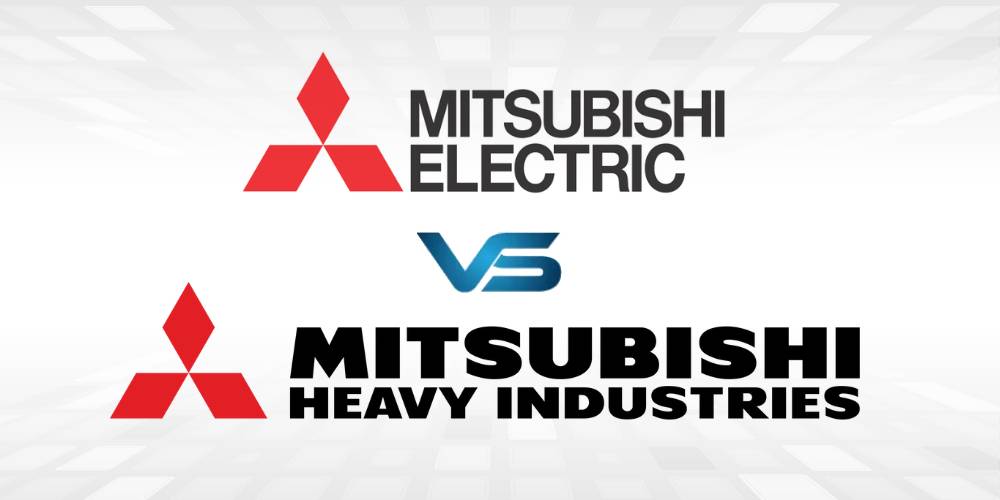
Same Name, Different Game: Which One Keeps Its Cool? 1. The Tale of Two Titans (Mitsubishi Electric vs Mitsubishi Heavy […]
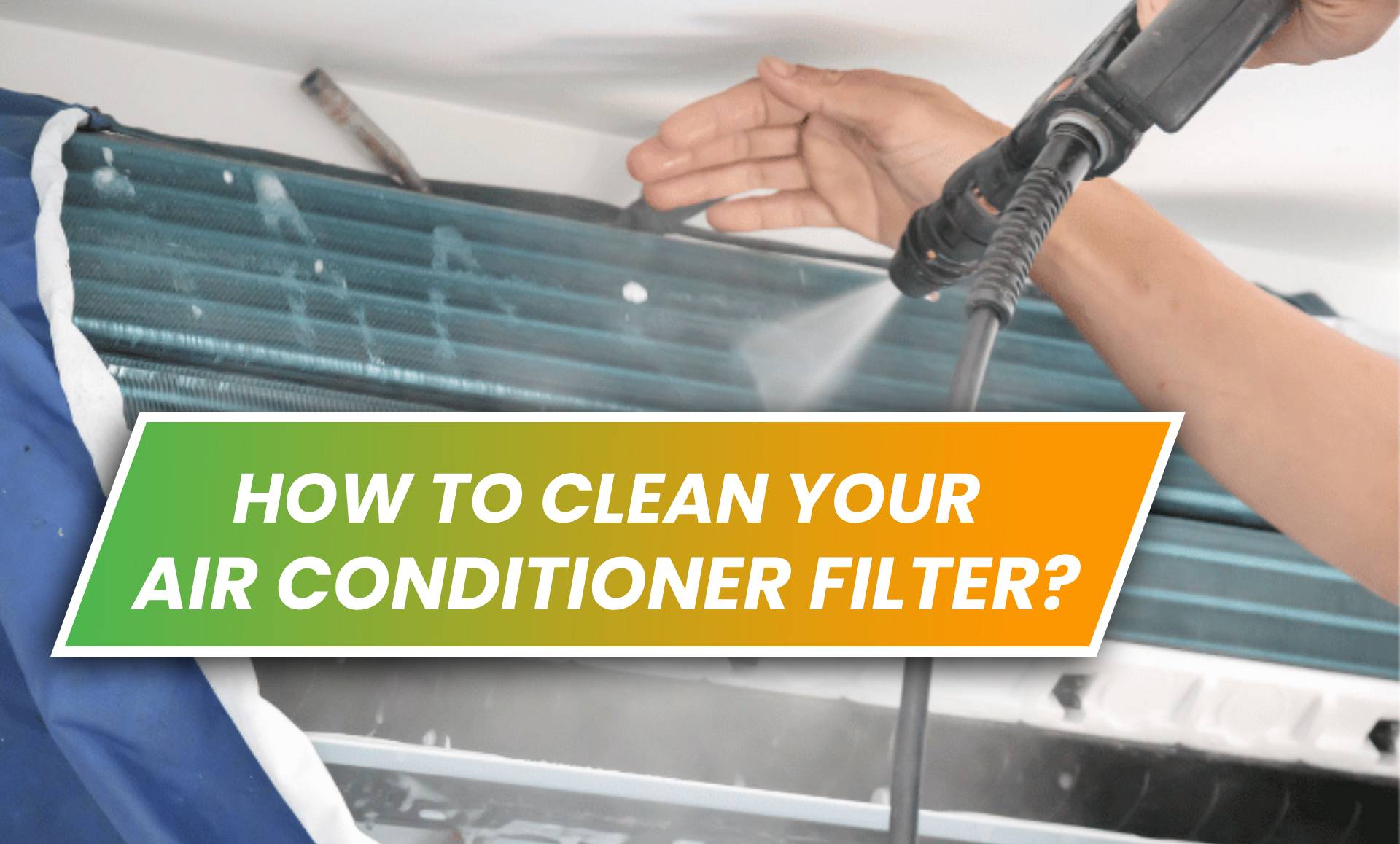
Learning how to clean your air conditioner filter is simple, quick, and can make a huge difference. A clogged or dirty filter doesn’t just hurt your air quality — it forces your system to work harder, driving up your energy bills and risking expensive repairs.
Is your air conditioner struggling to keep your home cool?
A blocked filter can be one of the reasons.
Over the years, the filter collects dust, allergens, and other forms of debris, which can significantly block airflow by as much as 50%.
As a result, your AC has to work overtime, driving up energy costs.
Even worse, a clogged filter not only affects the airflow but also degrades the air quality in your home environment, worsening breathing, especially for asthma and allergy sufferers.
The good news?
Unclogging most filters is inexpensive and simple. If you have the necessary tools, you can perform the maintenance and stay more comfortable in your home.
Not sure where to start? Don’t worry – this blog will show you how to clean the air conditioner’s air filter in six simple steps.

Keeping air conditioner filters clean is something most homeowners neglect. However, there are critical reasons why you should clean them:
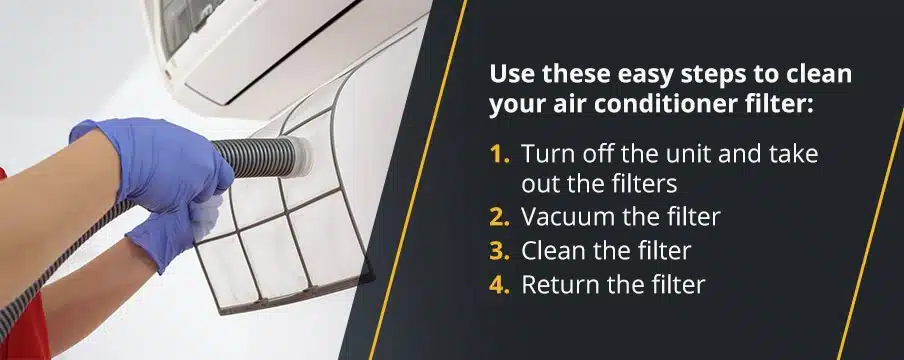
You now understand how important it is to keep your AC filter clean. Here’s a six-step guide on how to clean it yourself.
Before cleaning, ensure that the air conditioning is switched off.
This is a safety measure that avoids any risks of electric shock and ensures no dust will be sucked into the unit when you remove the filters.
For extra safety, remove the AC plug from the socket. If cleaning a central air system, turn off the electricity at the circuit breaker. This will allow you to remove and wash the filters safely without chances for mishaps.
AC filters are typically found in the wall units, ceiling vents, or front panels of portable and window units. They are also found in the return air vents or close to the HVAC system in central air conditioning systems.
To remove the filter:
After you have removed the filter, examine it for dust, pet hair, or mould.
If the filter area is a little dirty, cleaning it will restore proper functionality. But if it’s torn, discoloured, or excessively clogged, cleaning may not suffice—replacing it might be the best option.
A general rule of thumb is:
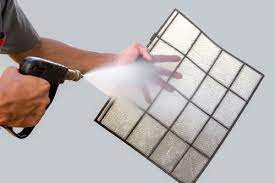
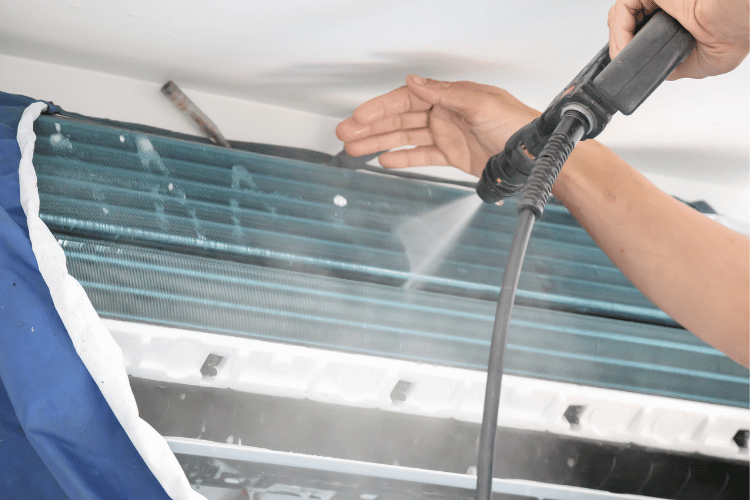
If, after examining the filter, you find that it is reusable and the clogging can be removed through cleaning, you have to pick the right cleaning elements and follow the correct procedure. It all depends on the kind of air filter you are dealing with.
In this case, it can either be washable or disposable. Their cleaning methods are different, so let’s explore how to do it:
Washable Filter:
For Disposable Filters:
PRO TIP: Allow the filters to dry entirely before fixing them back. This helps avoid mould growth inside the AC!
At this stage, your filters are clean, and you’ve allowed them to dry completely.
It is time to fix them back in the correct position and alignment. Proper installation is crucial to maintaining airflow and efficiency. How do you do it? It’s the opposite of what you did when removing the filter. Ensure the following:
For optimal performance and to avoid recurring issues, you should clean your AC filters often.
This will prevent any accumulation of debris, ensure better performance and boost comfort indoors. Regular maintenance also extends the lifespan of your unit, saving you money on repairs and replacements. Below is a recommended cleaning schedule:
PRO TIP: Set a reminder on your phone or mark your calendar so you do not forget to clean and maintain it. If you need help, consult reputable experts.
The proper type of air filters installed in your air conditioning unit is crucial for top-notch and long-lasting system efficiency.
Air filters of various types and with different purposes are available on the market, which is why it is important to determine the right types of filters and when to replace or clean them.
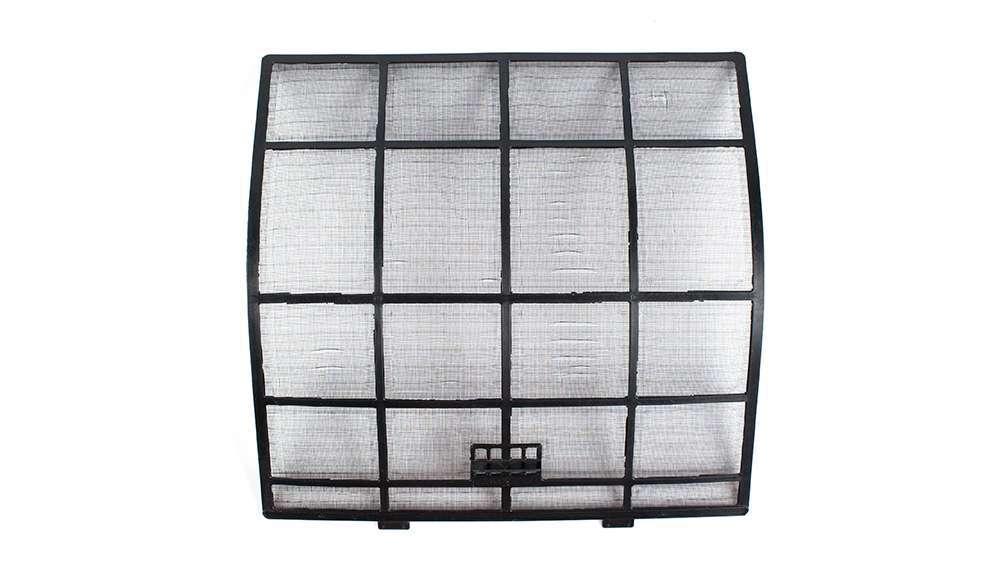
Fibreglass air filters are a cheap and disposable option. They do a good job of preventing large particles from infiltrating the space, and they can also ease the burden on HVAC systems when drawing air inside.
They are less effective, however, at blocking dust and other smaller contaminant particles. They are typically assigned a MERV 4 rating.
How to clean: Rinse the fibreglass filter with lukewarm water, gently scrub with mild detergent if needed, and let it air dry completely before reinstalling.
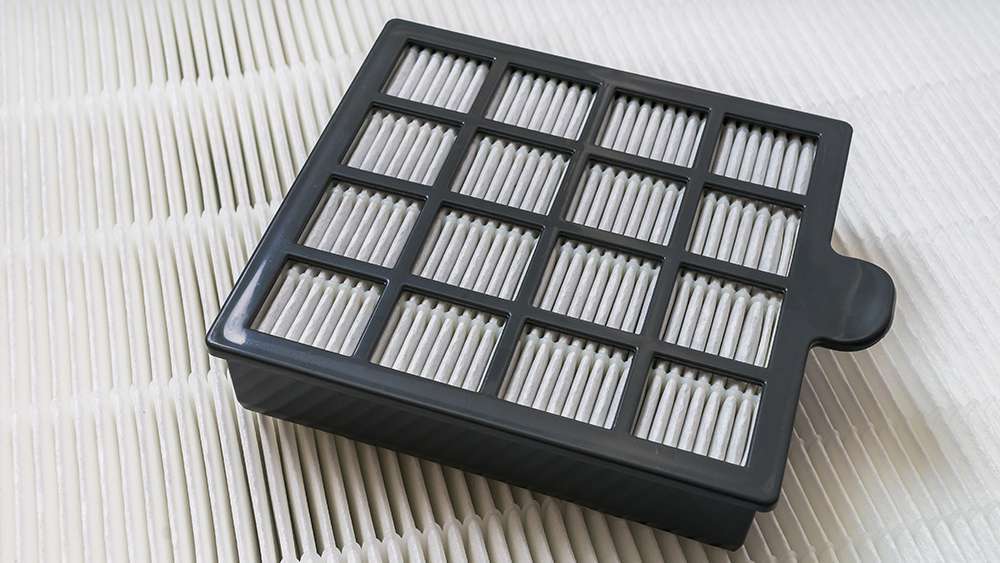
High-efficiency particulate air (HEPA) filters are recommended if you or any family members suffer from allergies or other respiratory issues.
These are the most effective types for removing up to 99.97% of dust, pollen, mold, viruses, bacteria, and other irritants from the air, and they are more expensive than fiberglass or pleated air filters. Search for filters with a MERV 11 or higher for optimal performance.
How to clean: Gently vacuum the HEPA filter with a soft brush attachment or rinse it with cold water (if washable), ensuring it is completely dry before reinstalling.
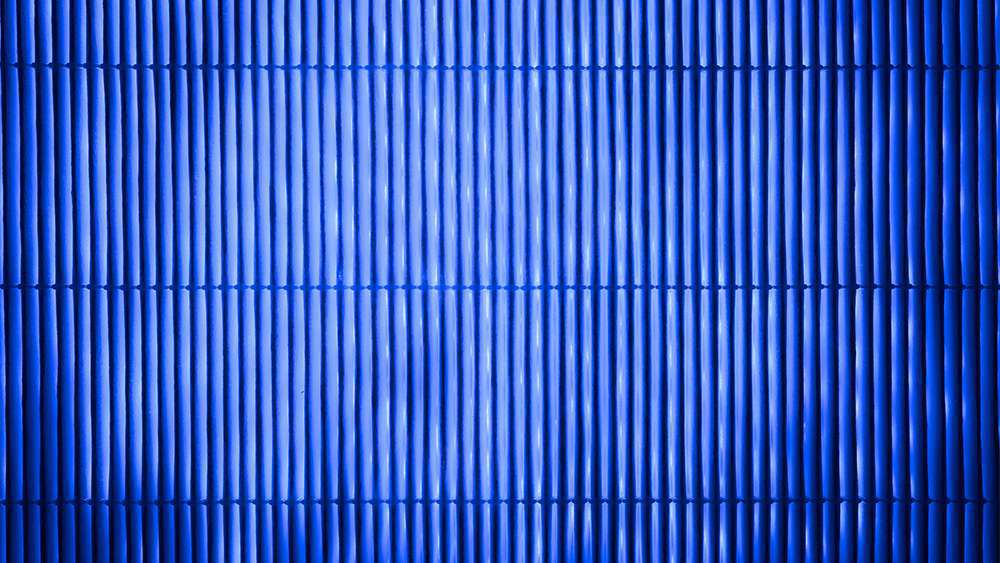
Air cleaners that could be integrated into your HVAC system use UV filters. These filters eliminate bacteria, viruses, and other airborne microbes using UV light.
They are an excellent choice if you have specific concerns or issues regarding indoor air quality in relation to microbial particulates. However, they are not very effective at removing dust and other contaminants from the air.
How to clean: To clean a UV filter in an AC, gently wipe it with a soft, dry cloth or use compressed air; avoid water or harsh chemicals to prevent damage.
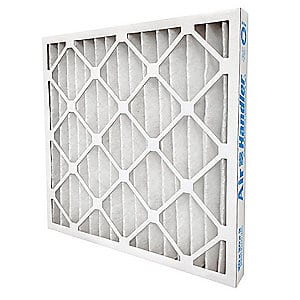
Pleated air filters are constructed from folds of cotton or polyester. Although they cost slightly more than fibreglass ones, they are more effective at removing dust and other tiny particles like pollen and spores from the air.
More pleated filters lead to better air filtration and reduce the chance of recirculating dust and other pollutants in the air. These filters usually have MERV ratings between 5 and 8.
How to clean: Gently vacuum or rinse the pleated air filter with lukewarm water, let it dry completely, and reinstall it to maintain airflow efficiency.
Ducted air conditioners are a little more complicated, but you can clean the filters yourself. Here’s how to clean a filter for a ducted air conditioner:
If you own a Fujitsu or Daikin air conditioner, here are some tailored tips to keep it in top shape.
This quick guide only covers basic cleaning for your wall-mounted split system. Basic cleaning for your wall-mounted split system only takes a few minutes and is simple:
However, if you have not cleaned your system in a while and are noticing defects or strange noises, it might be best to have a professional AC technician inspect your unit.
The filter cleaning procedures for Daikin reverse cycle air conditioners, which offer both heating and cooling, are similar. Here is how to clean the filter on a Daikin ducted air conditioner;
Daikin advises cleaning filters every season, or more frequently if you use your air conditioner every day (Daikin Filter Cleaning).
No, your air conditioning unit will sustain severe damage if you attempt to operate it without a filter. Dirt will quickly enter and clog some components, leading to poor efficiency and expensive repairs.
If the filter is torn, has a strong, musty scent, or stays clogged even after an attempt to clean it, it must be replaced with a new one.
AC filters include fiberglass, pleated, electrostatic, and HEPA filters. Some are reusable after washing, while others need damping after use. Ensure you check the type to avoid mistakes.
Yes, clogged filters contain allergens such as dust, pollen, and pet dander, which lower air quality and trigger allergic reactions when inhaled by vulnerable people.
Yes, a clogged filter can trap moisture, leading to mould and mildew growth and musty odours in your home. Cleaning or replacing your filter helps maintain fresh indoor air.
Yes, a vacuum with a brush attachment can remove dust from reusable filters quickly. However, deep cleaning with water and mild soap is still recommended for thorough maintenance.
Neglecting your AC filter can lead to poor airflow, increased energy costs, system overheating, and potential breakdowns that require expensive repairs or replacements.
The answer depends on the type of filters you are using for your air conditioning system. Different types of air filters have different functions and modes of operation. Depending upon the nature of air filters, you can choose either to clean them or to replace them.
Many types of filters are reusable, meaning they can be cleaned and reused. However, other types of air filters are disposable ones. Such air filters should not be reused; but should be discarded and replaced with new ones.
The frequency of cleaning air filters of your air conditioning system depends upon its operational pattern. During summer, when the air conditioner use is at its peak, it is recommended to clean your air conditioner filters every 6th week for optimal performance.
As for the rest of the year, when the air conditioner is not much in use, it is preferred to clean the air filters every 3 months. This also depends on how frequently you are using your air conditioner. At minimal usage in a clean environment, you can even reduce the cleaning frequency further.